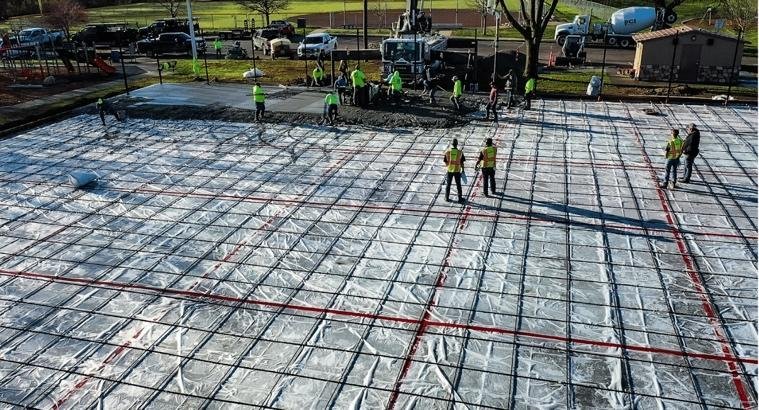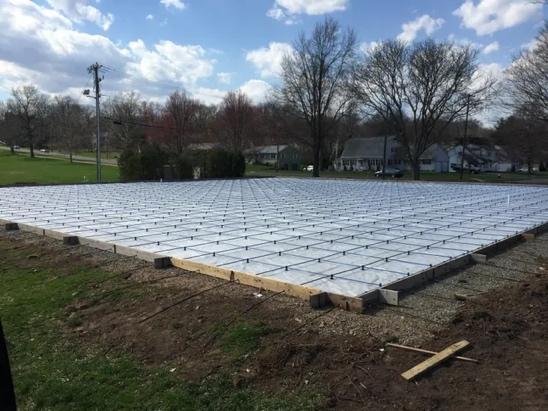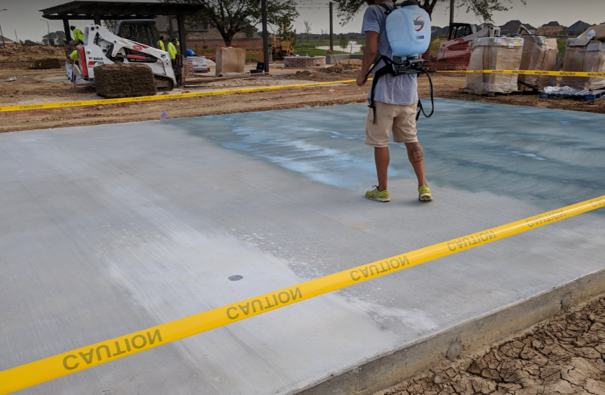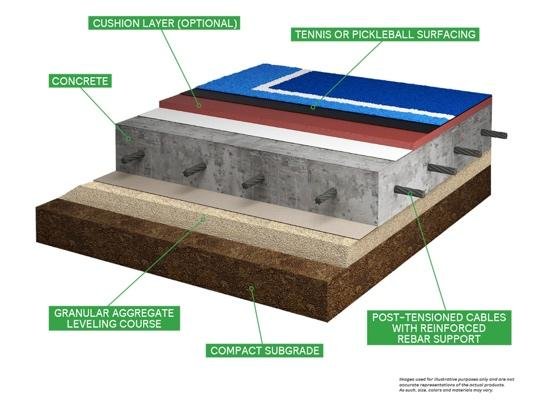Concrete Slab Systems
Precision. Strength. Built to Last.
Winplus Sport specializes in high-performance concrete slab installations designed for both athletic and industrial use. Whether you’re building a world-class sports facility or a durable foundation for heavy machinery, our team ensures every slab is engineered for excellence.
Concrete Slabs for Sports Courts
Post-Tensioned Slabs – The Elite Foundation for Sport
Winplus Sport offers cutting-edge Post-Tensioned (PT) concrete slab systems—the gold standard for professional and tournament-grade sports courts. PT slabs eliminate the need for traditional control joints, significantly reducing the risk of cracking and long-term maintenance. The result is a seamless, ultra-flat surface ideal for acrylic, PU, or modular sports flooring systems.
Benefits of PT Slabs for Sports Applications:
- No Control Joints Required: A continuous, joint-free surface improves safety, play quality, and aesthetics.
- Superior Surface Flatness: Ensures accurate ball bounce and consistent game play.
- Crack Resistance: Internal tension minimizes slab movement and thermal cracking.
- Long-Term Durability: Withstands environmental stress and substrate movement.
- Ideal for Premium Flooring Systems: Provides a flawless base for acrylic, PU, cushioned layers, or modular tiles.
Recommended for:
- Pickleball courts (indoor/outdoor)
- Tennis courts
- Multi-sport and professional competition courts
- Sports clubs, schools, universities, and arenas
PT Concrete Slab

Advantages
• Joint-free playing surface – No control joints required, resulting in consistent ball bounce and aesthetics.
• High crack resistance – Internal compression resists temperature and shrinkage cracking.
• Superior surface flatness – Perfect for acrylic coatings and synthetic systems that require even surfaces.
• Longer lifespan – Minimal maintenance and excellent long-term durability.
• Ideal for large or high-performance courts – Suitable for competitive facilities, clubs, and public sports complexes.
Disadvantages
• Higher initial cost – More expensive materials, specialized labor, and design.
• Requires experienced contractors – Improper tensioning or installation can lead to performance issues.
• Engineering required – Must be designed and reviewed by qualified structural engineers.
• Longer planning and coordination time – Not as fast to mobilize compared to standard slab pours.
Why Post-Tensioned Slabs?
Post-tensioning uses high-strength steel tendons within the concrete to create internal compressive forces. This technique increases the slab’s load-carrying capacity, reduces slab thickness, and virtually eliminates random cracking.
Reinforced Concrete Slabs – A Budget-friendly Choice for Excellence
Standard reinforced concrete slabs are a widely used and cost-effective foundation option for outdoor and indoor sports courts. Constructed using steel rebar within a concrete matrix, these slabs provide the structural strength needed to support various flooring systems such as acrylic coatings, PU layers, or modular tiles.
While traditional slabs typically require control joints to manage cracking due to shrinkage or thermal movement, they remain a practical solution for schools, clubs, community courts, and multi-purpose facilities where minor surface imperfections are acceptable. With proper site preparation, compaction, and finishing, reinforced slabs can deliver reliable performance and durability under normal play conditions.
This slab type is ideal for projects with budget constraints or where elite-level surface precision is not essential.
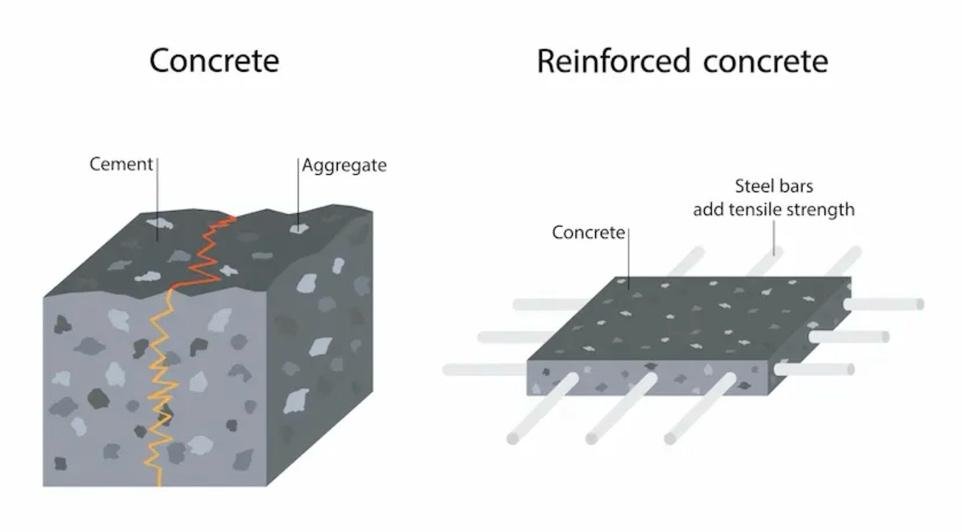
Advantages
• Lower upfront cost – Less expensive to construct, especially for smaller courts.
• Widespread availability – Materials and contractors are commonly available in all markets.
• Simple construction process – Requires less technical oversight than PT slabs.
• Good for small to mid-sized courts – Suitable when surface cracks or joints can be tolerated or managed.
Disadvantages
- Requires expansion/control joints– Joints can cause surface inconsistencies and ball bounce issues.
- Higher risk of cracking – Subject to shrinkage cracks, temperature shifts, and ground movement.
- Maintenance required over time – Cracks and joint damage may require sealing or patching.
- Not ideal for professional-grade courts – Jointed surfaces reduce play quality and surface uniformity.

